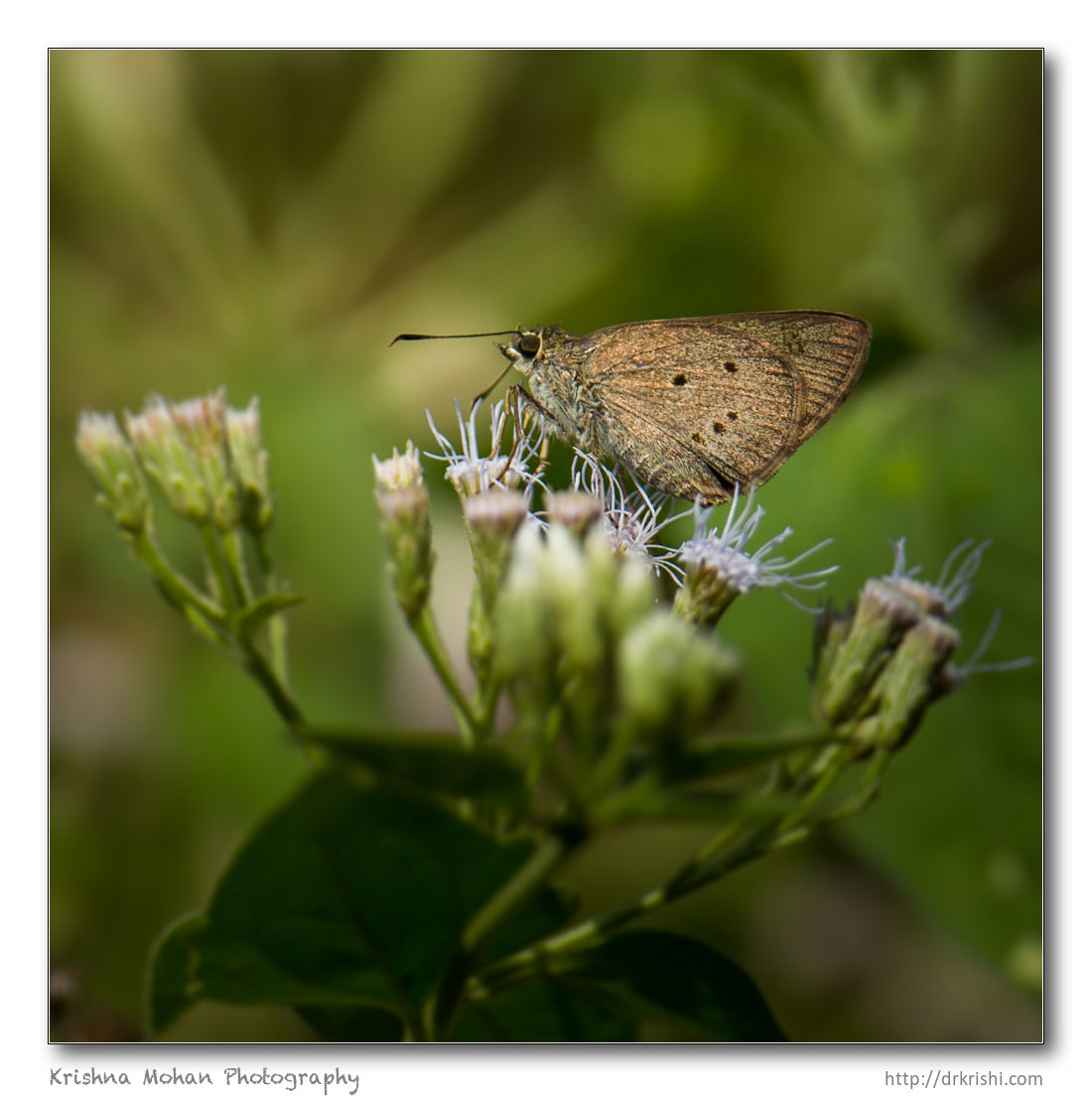
This Indian Palm Bob was captured during my review of Tamron SP 150-600mm f/5-6.3 Di VC USD lens Review which was published earlier here. I was testing the close-up performance of my Canon EF 300mm f/2.8L II IS USM + Canon EF 2X III Extender against Tamron SP 150-600mm using this butterfly as my model. It was leisurely feeding on Common Floss Flower, Chromolaena odorata, thus gave me plenty of time to do a test with both lenses on the same flower at the same time with my Canon EOS 5D Mark III body.

The Indian Palm Bob (Suastus gremium gremius) is easily distinguishable from other Skippers by the pattern of black spots on the underside of its hind wings. Though a relatively small it has wingspan about 3-4.5 cm and dark olive-brown upper side with seven semi-transparent whitish-yellow spots (3 in the apex and 4 scattered). Its wings are pale brown sprinkled with grey scales and with five sharply defined, small, and black spots. Three of these are in one line, two opposite to these three. These spots may be sometimes very small or faint, but are always present in the same pattern. There are semi-transparent spots on the fore wings. The male and female are identical in appearance.

Similar Species Given the characteristic spots on underside of the hind wings, this species cannot be confused with any other butterfly in India. However, in size and shape it may look superficially similar to the Swifts.

Commonly found around palms on which its caterpillars feed. It is present in all habitats in which various palms occur-evergreen, semi-evergreen and deciduous forests, rocky hill slopes and plateaus, coastal areas and human habitations. As with most skippers, it has a quick flight and rests with its wings folded closed. It is distributed throughout the Indian subcontinent and Indo-China.
This is an extremely busy butterfly, constantly on the move and therefore hard to observe for a length of time. Its flight is very strong and swift. It flies smoothly in a straight line when the flight path is clear, winding occasionally to avoid obstructions and navigating itself expertly and rapidly through vegetation. It covers long distances in a single flight and therefore is difficult to trace once it takes off. The task of tracing it is further complicated by its habitat use because it flies in all vegetation layers: from ground level to tree-tops.

It is happy with a variety of food sources- flowers, wet soil patches and bird-droppings. There does not seem to be a particular preference for any one of these, the butterfly feeds on them probably whenever they are available. However, it is more frequently seen at Lantana and Chromolaena flowers.
The males sometimes bask. They select a sunny patch and sit on upper surfaces of leaves at any height from the ground. There they open their fore wings partly and spread the hind wings flat to the substratum.

Larval Host Plants The caterpillars feed on plants from family Arecaceae: canes (Calamus spp.), fishtailed palms (Caryota urens), coconuts (Cocos nucifera) and species of date palms (Phoenix acaulis, P. lourierii). These species are recorded, but it utilizes other palms as well, including some ornamental species.

